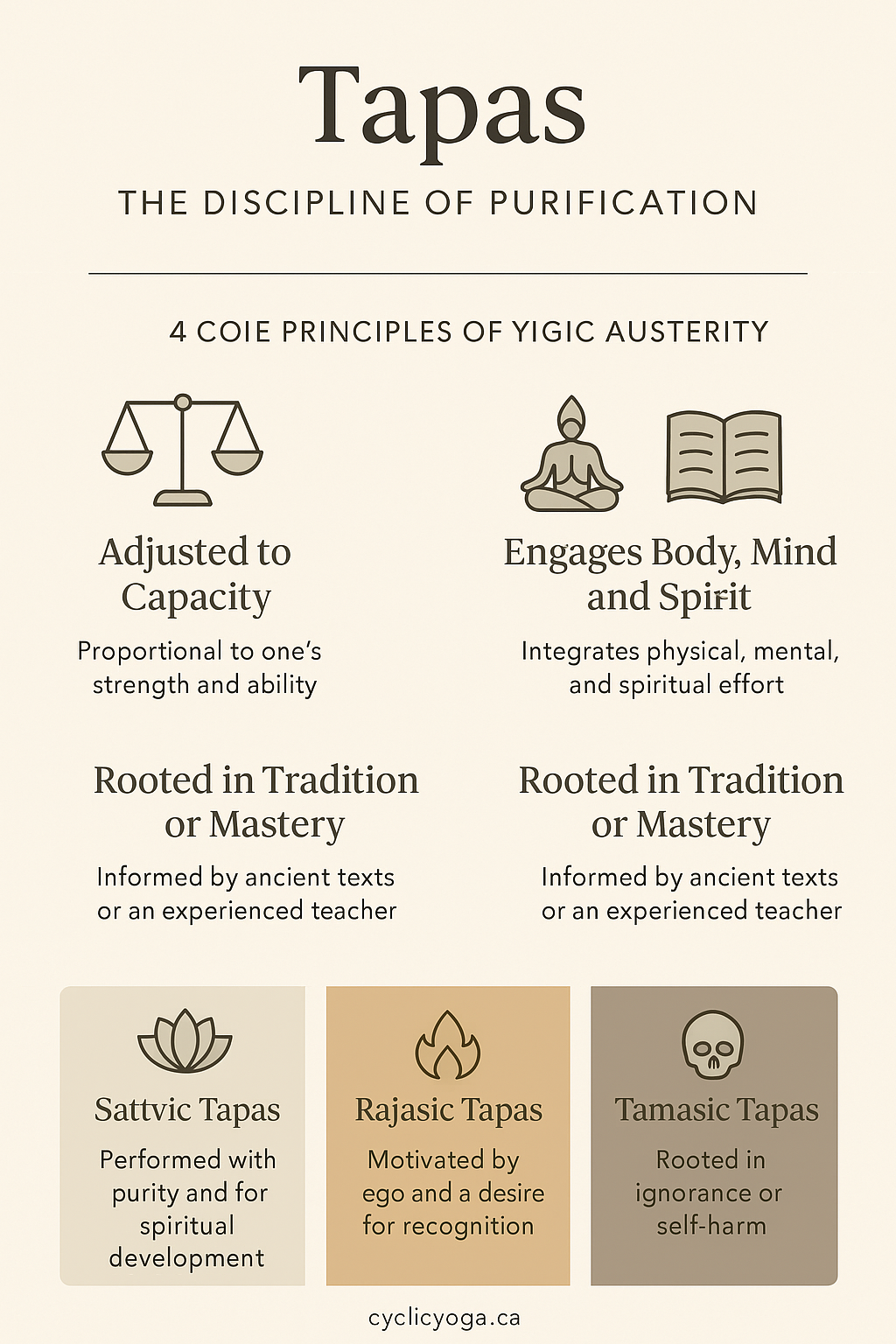Tapas: The Discipline of Purification
Some people view yoga as a form of asceticism, assuming that a yogi is someone constantly engaged in self-denial and hardship. However, in the yogic path, austerity is not the goal—it is a tool for self-discipline and inner training.
The Sanskrit root “Tap” means to burn, to glow, or to shine. Tapas, the third observance in the Niyama limb of yoga, refers to the inner fire that fuels endurance, resilience, and the ability to withstand challenges. Through Tapas, the yogi consciously undertakes disciplined practices to overcome obstacles that stand in the way of spiritual growth.
When our desires operate without conscious control, the development of our inner potential becomes hindered. For this reason, those walking the path of liberation employ specific austerities to master their physical urges and psychological impulses.
But not all austerities are created equal. For Tapas to be effective and transformative, yogic disciplines must meet four essential criteria:
1. Proportional to One’s Capacity
Austerities must be tailored to the individual’s strength and ability.
If the practice is too demanding, it borders on self-harm and brings more tension than transformation.
If too lenient, it fails to challenge or change the practitioner.
2. Guided by a Clear Time Frame
Yogic austerity should never be prolonged without structure.
Without proper timing, one may fall into the trap of over-discipline—not training the ego, but suppressing or damaging it.
In yoga, the duration of Tapas is traditionally aligned with cosmic rhythms—such as the positions of the moon, sun, and earth—as well as the individual’s own time and place.
3. Engaging Body, Mind, and Spirit
Authentic Tapas practices integrate physical effort, mental focus, and spiritual transformation.
They are carefully designed to awaken dormant faculties and unlock hidden capacities of the body and mind.
4. Rooted in Tradition or Guided by Mastery
Austerities must originate from ancient wisdom or be undertaken under the guidance of an experienced teacher.
If the practice is too mild, it yields no progress; if too intense, it risks physical or mental harm—thus defeating the purpose of true Tapas, which should never be injurious.
By practicing Tapas, the yogi cultivates the ability to withstand hunger, thirst, heat, cold, pain, and hardship. These practices build mastery over emotional turbulence—such as greed, desire, anger, resentment, and more.
Tapas eliminates laziness and indulgence, purifying both body and mind, while strengthening the practitioner’s willpower.
Three Forms of Tapas in Yogic Philosophy
Sattvic Tapas – Pure Austerity
Performed with sincerity for the purpose of spiritual growth and self-realization.Rajasic Tapas – Passionate Austerity
Motivated by pride, vanity, or the desire to impress others.Tamasic Tapas – Ignorant Austerity
Rooted in stubbornness or misguided beliefs, often involving self-harm or reckless excess.
While all three forms can offer short-term enhancement of willpower or bodily resilience, only Sattvic Tapas leads to true spiritual benefit. It is this pure, disciplined effort that clears the path to wisdom and ultimate liberation.

